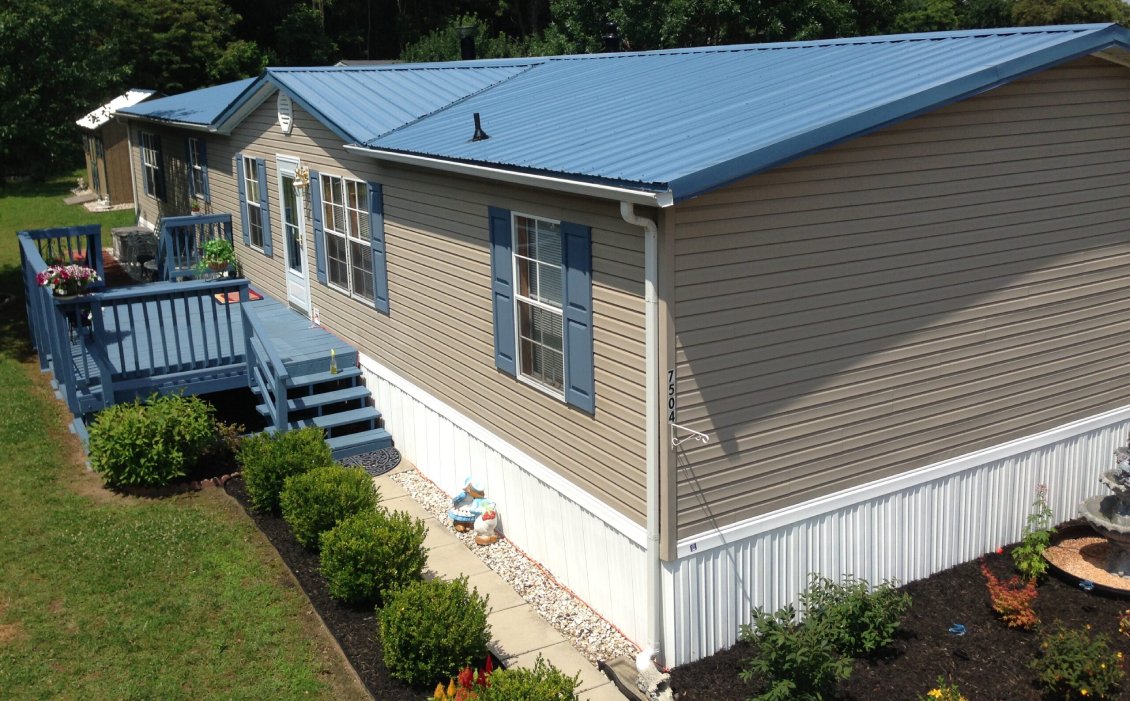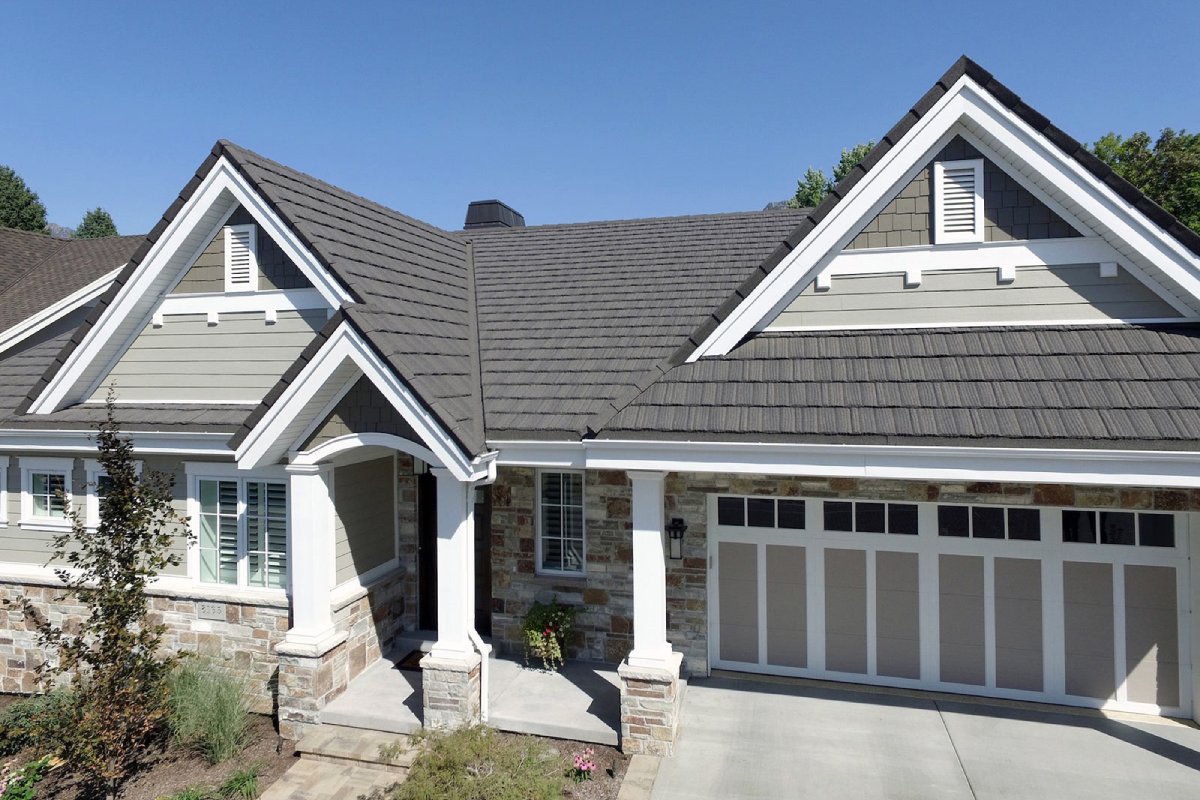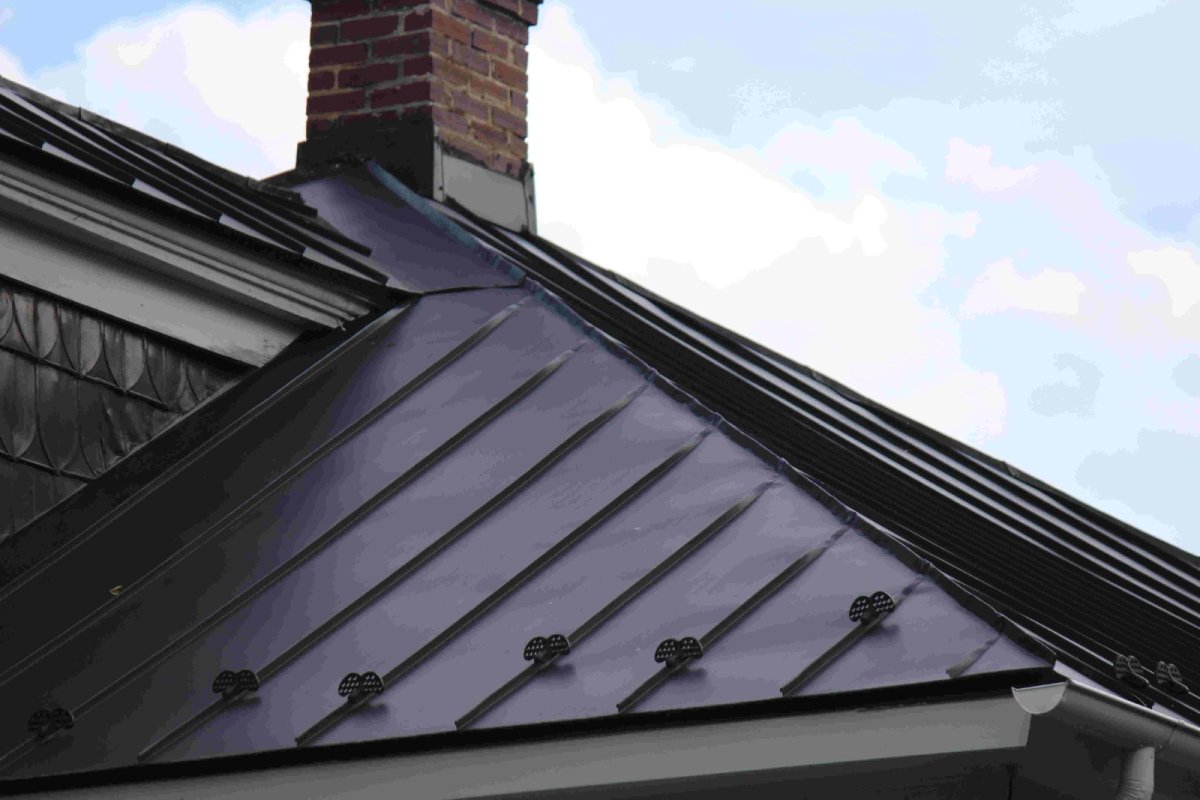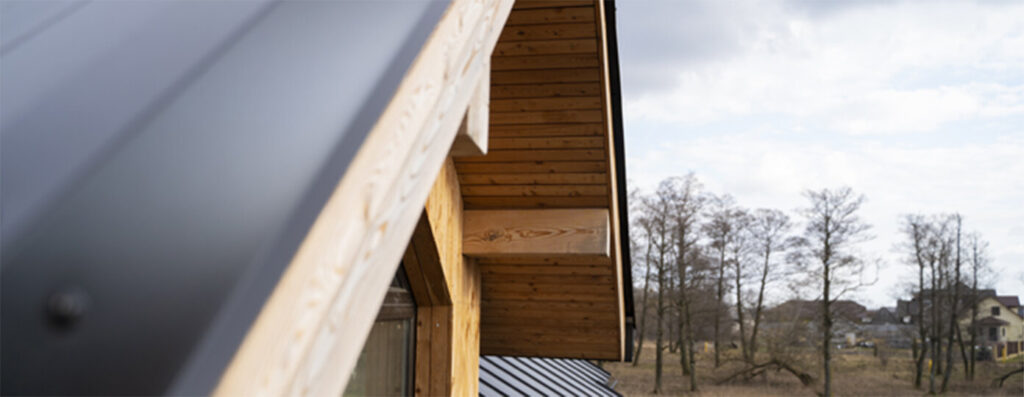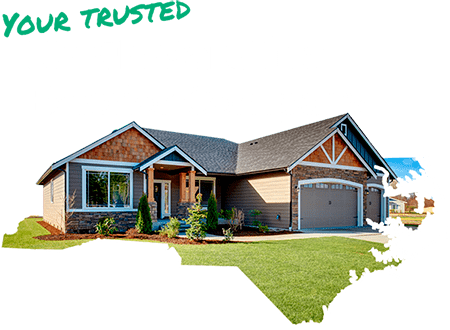Are you wondering how to install metal roofing on a mobile home? This guide demystifies the process, laying out a straight forward, step-by-step approach to ensure your mobile home is capped with a strong, weatherproof covering. There is no fuss—just practical advice to get you started on enhancing your home’s durability and style.
Key Takeaways
- Before installing a metal roof, thoroughly assess your mobile home’s existing roof condition to ensure it’s structurally sound and can support the new roof without extra work.
- Check the pitch of your roof to determine what types of roofing options you have.
- Selecting a suitable metal roofing material is critical for durability and performance. It also offers the added benefits of low maintenance, energy efficiency, and various styles to match your home’s aesthetic.
- Maintaining your new metal roof is relatively easy and infrequent, but regular cleaning and preventative measures like contouring tape are vital to ensuring its longevity, potentially spanning up to 70 years.
Assessing Your Mobile Home’s Roof Structure
Before considering the installation of a new metal roof, it is vital to thoroughly examine your mobile home’s existing roof structure. The longevity of your new roof depends on the condition of what’s underneath. Are there weak spots or water damage? Can the structure bear the weight of a new roof? You need to answer these questions before moving on to the next step.
Consulting the metal roofing manufacturer could gain essential information about compatibility with your home’s structure. Ultimately, the goal is to have your mobile home support the new roof without complications. Also, consider the lifespan of your mobile home during this process. Will your new metal roof outlast your home? It is worth considering, as metal roofing materials are known for their durability.
But here’s the good news: metal roofing is surprisingly light. This feature might eliminate the need for additional structural support, reducing overall strain on your home’s structure and leaving you wondering how to assess your roof’s condition. Xterior LLC provides expert advice, a free inspection, and top-notch installation services for mobile home roofing.
Choosing the Right Metal Roofing Material
So, you have decided to install a metal roof on your mobile home. Great choice! The challenging part, however, lies in selecting the appropriate metal roofing material. Metal roofing offers a plethora of benefits, including:
- Durability
- Low maintenance
- A customizable appearance
- Energy efficiency Moreover, its lightweight nature is an added advantage for mobile homes.
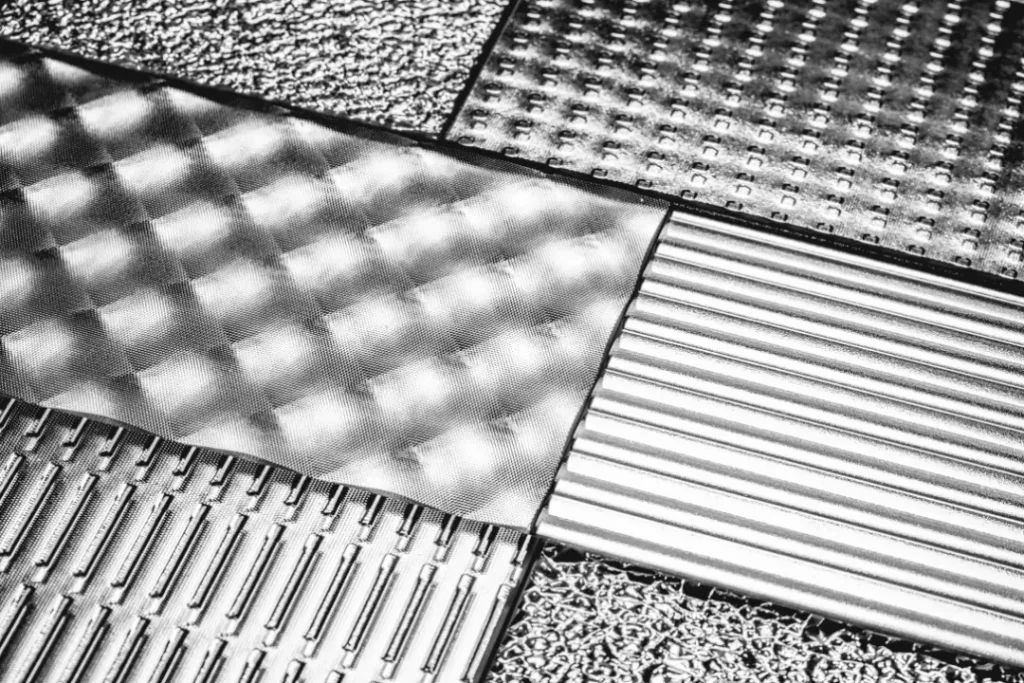
However, not all metal roofs are created equal. Some are made of aluminum, while others come with ventilated systems. You can choose various colors, hues, textures, and finishes to match your home’s aesthetic. Do not forget your metal roof must be resilient enough to endure North Carolina’s diverse weather conditions. Xterior LLC provides metal roofing with energy benefits like solar heat reflection and improved thermal regulation, thanks to elastomeric coatings. With metal roofing’s variety and durability, it is an excellent choice for your home.
Different coatings, sealants, and patches are also designed specifically for metal roofing on mobile homes. These additions can increase your roof’s durability and adapt to specific material needs and conditions. The bottom line? Choosing a suitable metal roofing material is crucial to ensure the longevity and performance of your new roof.
Installation Process of a Metal Roof on a Mobile Home
Step-by-Step Metal Roofing Installation
Ready to tackle a metal roofing project? Whether you’re installing it yourself or just want to know what to expect when the pros arrive, follow these steps to get started.
Caution
Roofing can be risky, especially on tall buildings. Always take proper precautions to prevent slips and falls, and avoid working in bad weather. Watch out for overhanging power lines. Be sure to wear appropriate clothing and shoes and use protective equipment.
Good to Know
Always follow local building codes, and check to see if a permit or inspection is required before beginning work.
Instructions
Step 1: Take Measurements and Buy Metal Roofing Materials
When budgeting your project, you likely made a rough estimate of your roof’s area. Now, you need precise measurements.
- For a basic gable roof, multiply the length of the rake (the line from the top ridge to the eaves) by the distance from eave to eave. Double this to get the total square footage.
- If your roof has features such as skylights or dormers, measure these separately and add them to your total.
- Order 10% extra to account for waste.
Tip: Draw a simple diagram to record the measurements for reference as you work.
Step 2: Remove the Old Materials and Make Structural Repairs
If you’re replacing an old roof, start by removing the existing shingles, underlayment, and vents.
- Check the surface below the roof for signs of damage to the flashing or sheathing that could lead to leaks.
- Remove or hammer in any nails left sticking out after removal.
- Check with local authorities about shingle disposal requirements.
Step 3: Install Underlayment
Underlayment is an extra layer that protects your roof decking from moisture.
- Ensure the roof surface is smooth, clean, and dry before you begin.
- Consult product details or the roofing manufacturer to determine the required underlayment type.
- Follow the instructions for your underlayment, including overlap requirements between rolls, allowing for material expansion and contraction with temperature changes.
Step 4: Install Drip Edge Flashing and Closure Strips
Drip edge flashing, also called eave trim, goes along the roof eave edges to divert water away from the roof edge and into the gutters.
- Start at a corner with the first drip edge piece overlapping the edge by 1 inch. Use a hand seamer to bend the end of the drip edge to wrap around the corner.
- Allow a 3-inch overlap for each new drip edge piece and apply caulk or sealant tape at the seams.
- Fasten the trim every 12 to 16 inches with roofing nails or screws (check product details for specifications).
- Install closure strips to prevent water, debris, and pests from getting under your roof panels. Your roofing should have instructions and specifications for the right strips to fit your panels. Typically, you’ll secure inside closure strips at the eaves with butyl tape. Some closure strips have adhesive across the tops but are more expensive.
Step 5: Install Corrugated Metal Roofing Panels
Now it’s time to install the panels over your drip edges and closure strips. Always work square to the roofline.
- Check with the roofing manufacturer and local building codes for screw requirements and placement recommendations.
- Start at one eave and work your way up, overlapping the panels as you go. Apply caulk or roofing sealant seam tape at each junction to seal the roof properly.
- Fasten the panels with metal roofing screws according to the manufacturer’s instructions. At the eaves, you’ll typically need to drive fasteners through the panels and the closure strips, but check your roofing panel instructions for specific steps.
- Cut panels to size as needed using a circular saw with a compatible blade.
Step 6: Install Closure Strips and the Ridge Cap
Once the roof panels are all in place, you’ll need to put closure strips at the upper ends of the panels where roof slopes meet. Check your roofing installation instructions for the specific closure strips needed for your panels.
- Decide if you need solid or vented closures, which depend on your roof’s design and your home’s ventilation.
- Install butyl tape a few inches below the ridge, along its length. Cover the tape with closure strips, then apply a line of sealant on top of the strips or use closure strips with adhesive, which are available but more expensive.
- With the closure strips in place, install the ridge cap on top of them and press it onto the exposed sealant. Fasten with screws according to the manufacturer’s instructions.
Increase the Comfort and Value of Your Home
Investing in a new metal roof will significantly enhance your home’s comfort and value. Once installed, your home’s exterior will have an updated look, and you’ll have peace of mind knowing your house is protected for years to come.
Depending on the style of the metal roof being installed—through-fastened, standing seam, or shingle roof—there are specific methods for flashing around skylights, vents, and edges. While asphalt shingles are standard for many homeowners, Xterior LLC can handle all the details, ensuring your new metal roof is installed correctly and efficiently.
Maintaining Your New Metal Roof
With your new metal roof in place, the next step is to consider its maintenance. One of the major benefits of metal roofs is their long-lasting durability. With proper care, your metal roof can last for decades, even up to 70 years! This longevity means less maintenance and fewer repairs over time, making metal roofing a cost-effective and attractive option for homeowners.
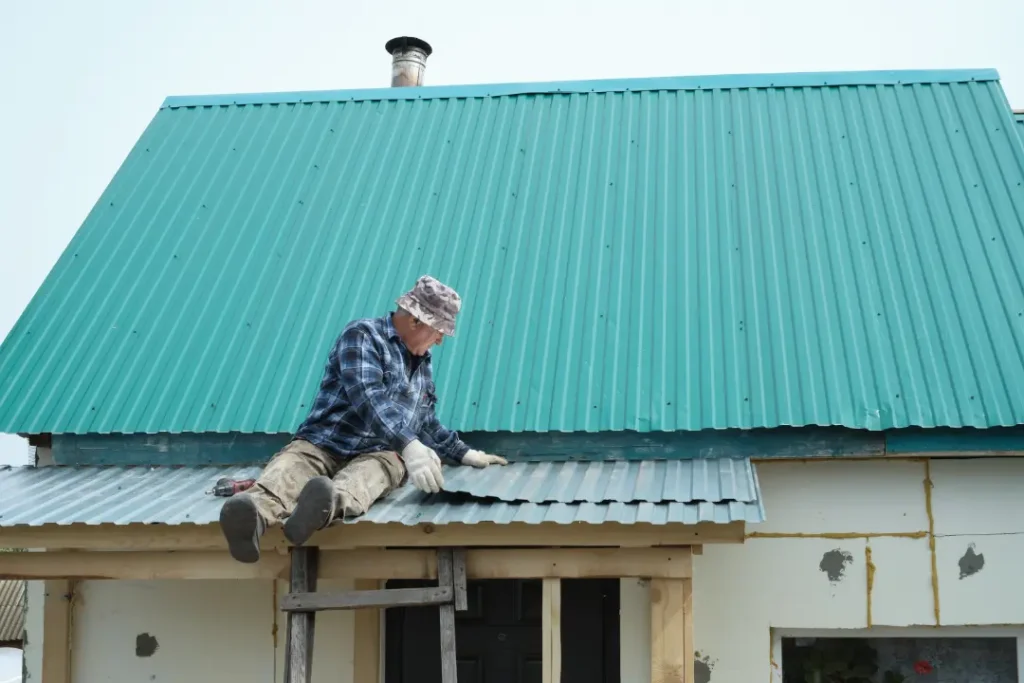
However, even the most resilient roofs require some tender loving care. Regular cleaning, at least once to twice a year, can help maintain your metal roof’s appearance and performance. To enhance the waterproofing of your metal roof, apply contouring tape over seams before applying elastomeric coatings. This process helps prevent potential leaks, ensuring the longevity of your roof.
Remember, even with regular maintenance, extreme weather conditions can cause immediate damage to your roof. That’s where Xterior LLC comes in. They provide emergency tarping services that can swiftly protect your metal roof from severe weather conditions, ensuring the longevity and safety of your home.
Financing and Budgeting for Your Metal Roof Installation
So, what is the cost of installing a metal roof on a mobile home? The cost varies depending on several factors, including the size of your home and the type of metal roof you choose. For a double-wide mobile home, the cost to replace a metal roof ranges from $7,500 to $25,000
While this might seem like a hefty investment, remember that a metal roof is a long-term solution that can save you money in the long run, including energy costs; plus, Xterior LLC offers a variety of financing options, making home improvements, including metal roof installations, accessible to a wider audience. They even provide free, no-obligation estimates so you can budget for your project without any surprises.
Summary
In conclusion, installing a metal roof on your mobile home is a worthwhile investment. Not only does it offer durability and energy efficiency, but it also adds a modern touch to your home. From assessing your roof structure to choosing the suitable material, installing and maintaining your new roof, it’s a process that requires careful thought and planning. But with expert guidance from Xterior LLC, you can enjoy a long-lasting, high-performing roof that enhances your home’s value and appeal.
At Xterior LLC, we bring our expertise and commitment to quality directly to homeowners in Wilmington and High Point, NC. Whether you’re upgrading your mobile home with a durable metal roof or exploring other roofing options, we understand the specific needs of these regions. Our tailored approach ensures that your home not only looks great but is also well-protected against the elements. Let us help you make the best choice for your home’s longevity and curb appeal.
Frequently Asked Questions
How much does installing a metal roof on a mobile home cost?
It depends on the size of your mobile home. The cost for a double-wide, it ranges from $7,500 to $25,000.
How long does a metal roof last?
With proper care, a metal roof can last for decades; some can even endure for up to 70 years.
What maintenance does a metal roof require?
To maintain a metal roof, homeowners should clean it 1 to 2 times a year and apply contouring tape and elastomeric coatings for improved waterproofing. These actions will help keep your metal roof in good condition and prevent issues in the long run.
Can I install a metal roof on any mobile home?
It’s important to assess the mobile home’s roof structure before installing a metal roof to ensure it can support the new roof and is safe and secure.
Does Xterior LLC offer financing options for metal roof installation?
Yes, Xterior LLC offers a variety of financing options to make metal roof installation accessible to more homeowners.
Disclaimer:
The content in this blog is for informational purposes only and is intended to assist homeowners in understanding roofing, siding, windows, gutters, shutters, and general home improvements. Xterior LLC advises against attempting any of the tasks described here, as they require professional expertise. We do not assume liability for any injuries, damages, or losses resulting from DIY attempts. Always refer to the manufacturer of products for specific maintenance instructions.
By viewing this blog, you acknowledge and release Xterior LLC from any and all liability related to the use or misuse of the information provided.
Please note that Xterior LLC may not offer all the services discussed. Repairs, estimates, and inspections are priced based on availability, location, and time. All services, offerings, and prices are subject to change without notice.
For more information or to request services, please contact Xterior LLC directly.


